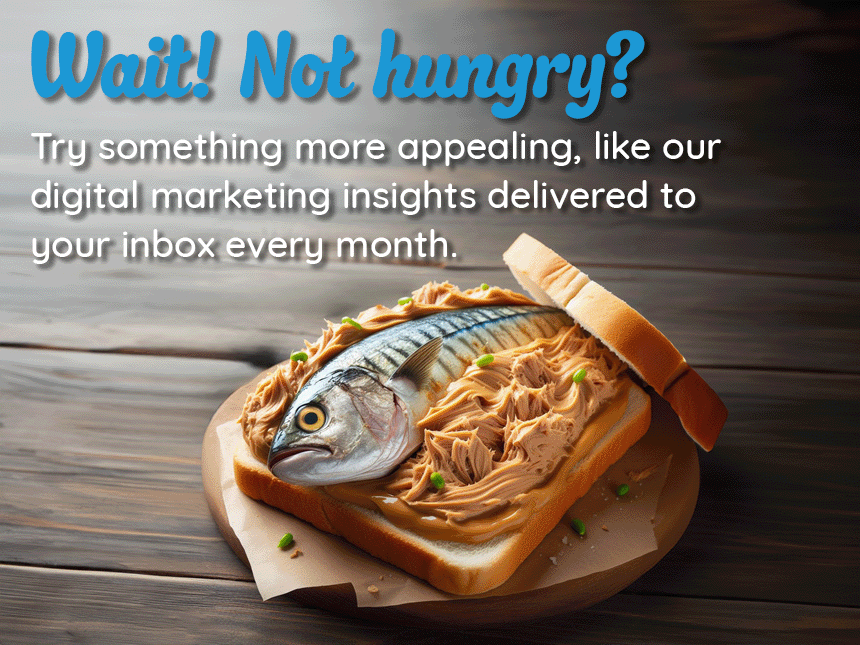Brand Awareness vs. Lead Generation? Do Both and Rake in the $$
If you are contemplating whether to run a lead generation campaign or a brand awareness campaign, you may have it all wrong. What you should do to get the most out of your advertising dollars is incorporate both advertising strategies together. In this post, I will outline a digital marketing strategy that is proven to increase your ROI and engagement.

Before I give you the basic formula to generate the cash monsoon, let’s go over the tools, techniques, and lingo you’ll need to use to get things going.
The lead generation strategy:
Create lead generation campaigns designed to attract new customers and/or capture personal identification of visitors who are interested in your product or service. These campaigns usually drive users to a landing page with a single purpose: to collect contact information and thereby extract potential sales leads. Your call to action and your “ask” will be key. If you make the process to convert hassle free you’ll get more conversions. If you make the exchange of information for something valuable or useful and hassle-free, you are golden.
The brand awareness strategy:
The American Marketing Association (AMA) defines brand as, “A name, term, design, symbol, or any other feature that identifies one seller’s good or service as distinct from those of other sellers.” These campaigns’ main objective is to increase brand exposure and brand equity within competitive markets. The channels and tactics to achieve this goal may differ depending on your business, product, or service, but the general idea is the same: generate as many impressions as possible. Knowledge of your brand is the first step to acquiring a new customer.
Your brand is more than just your logo or your company colors. It’s more like an aura surrounding your company, or its “soul.” And it seems how we relate to companies and brands is very much like how we relate to people in our everyday lives. You are way more likely to buy from or help out a person you know and trust. The same is true with brands. Try to tailor your images, videos, and message tone to the medium you are using and the audience you are targeting. I am not going to go into that here but there are a number of books and scientific studies to explain how we interact with brands.
In Chris Malone and Susan T. Fiske’s book, The Human Brand: How We Relate to People, Products, and Companies, they explore the psychology behind how and why people make decisions and how it relates to companies and brands. It is a must read for those looking to better understand how we interact with the brands around us and why we are loyal to some while despising others.
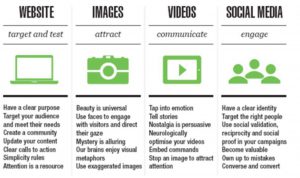
What are the Four Levels of Brand Awareness?
Brand awareness is often developed through a series of stages, each representing a different level of familiarity and connection with a brand. Understanding these levels can help businesses tailor their marketing strategies more effectively.
- Brand Recognition: This is the first level of brand awareness, where consumers can recognize a brand by its attributes such as logo, colors, or tagline, but may not have a deep understanding of what it represents.
- Brand Recall: At this stage, consumers can recall a brand name when prompted by a product category or need. This level indicates a stronger association between the brand and its product or service offerings.
- Top-of-Mind Awareness: Here, the brand is the first thing that comes to mind when a consumer thinks of a particular category. Achieving top-of-mind awareness is a key goal for many brands, as it often leads to being the preferred choice.
- Brand Loyalty: The highest level of brand awareness, where consumers have a strong, positive connection to the brand, leading to repeat purchases and brand advocacy. At this stage, customers not only recognize and recall the brand, but also actively choose it over competitors due to a deep-seated preference.
Where you send visitors matters. A lot.
Home Pages should never be used as the destination page for your digital advertising campaigns; it’s a no no. It’s too unfocused – once they get there, based on the ad they clicked, what should they do next?
Landing page(s) are specific web pages singularly focused on your campaign goal. They should only have one call-to-action. They should not have main navigation to take users somewhere else or even let them think of something else. You should not run a single ad until you have a landing page in place.
“Warm-up” / “jump” landing page(s) are sometimes called click-through pages. The goal of the jump page is to persuade the visitor to the product or service to click the call-to-action. They are often paired with videos or images along with a description of benefits.
Your conversion rate is important to making this all work, so landing page testing and optimization should not be overlooked. This is where brand and incentives to convert really matter.
Brand Awareness vs. Lead Generation
Lead generation and brand awareness play pivotal roles in marketing strategies. While lead generation directly impacts your sales pipeline, brand awareness lays the groundwork for long-term success. A strong brand presence can facilitate easier lead generation, while successful lead conversion can reinforce your brand’s reputation.
Why use brand awareness AND lead generation?
If your goal is to attract new customers, doesn’t it make sense to generate as many impressions as possible for audience segments likely to convert (buy) while increasing or re-enforcing your brand equity? And shouldn’t you send them to a page that has a single purpose and uses images, logos, and messaging that describes your unique brand proposition? If you answered “yes” then you’re thinking straight.
The two strategies have a common goal and that is to drive action. It seems antiquated to think of them as mutually exclusive. Nowadays it’s more about the channel and tactic being used and how likely it is to convert. If your company needs sales right away, then you should allocate more of your budget to focus on targeting the middle to bottom of the funnel, since those people are closer to making a purchasing decision. But if your business or product is new to the market or is relatively unknown, you may want to target the top of the funnel to prime the pump.
Using both techniques in tandem with creative planning and careful budget allocation will allow you to target both ends of the sales funnel and everything in between. But before you start, research user behavior, research audience trends, and research your competition. In the end, the data you uncover will lead you in the right direction.
Don’t worry, you don’t have to break the bank to gain quantitative data on your visitors. There are plenty of tools you can use to gain insights into visitor traffic and help you manage your campaigns. My favorite free tools are Quantcast measure, Google Tag Manager, and Google Analytics. These tools are amazing on their own but when used in concert can help you answer why a user clicked and help you understand who your customers are.
Research audience insight and analytic tools
- Google Tag Manager – A tag management system that allows you to quickly update tags and code snippets on your website or mobile app, including conversion tracking, site analytics, remarketing, and more without needing to alter your website/app code.
- Google Analytics – Create audience segments by goal competitions, event actions, and source to identify and measure the geographic, social referral sources, demographics, interests, and device types you should target.
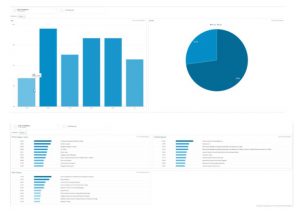
- Quantcast Measure – A free cross-platform audience measurement solution that can be used to quantify your web traffic. Learn who your audience really is. Discover what sites your users visit, political affiliation, household income, shopping interests, industry and occupation, education level, ethnicity, and more. For free!
- Advanced users: Segment the pixel and you can get granular demographics about your web traffic based on campaigns, source, event action, conversions and more. Armed with this data you can now make informed digital buys based on data.
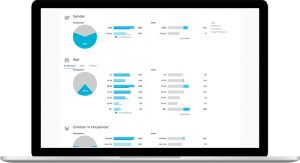
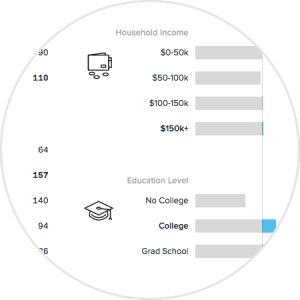
- SpyFu – A competitor analysis tools that can give you a leg up on your competition. Although SpyFu’s data is about 90 percent accurate, it is 100 percent useful when trying to decide what keywords to bid on and in determining how competitive a term is. Here’s what you do: Analyze your competition’s keywords and see which ads have performed the best over time. If the best performing ads have a call–to–action or offer your ads do not, you may want to test a similar offer to see how they do. If you are already running ads, run detailed reports to see what terms you are missing and view recommended keywords you should buy. Armed with a better understanding of your competition, conversion rate, user behavior and demographics, and more, you should have a better understanding of who your customers are and what you’re up against.
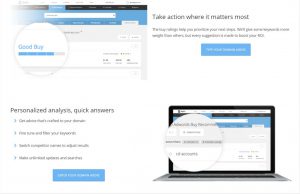
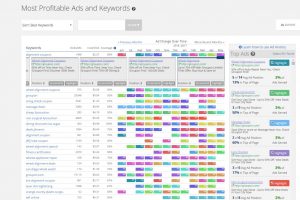
Who you should target and where to reach them will become apparent after careful research. And where to target them should become obviously apparent as well. The actual tactics and channels will vary based on your business, product, or service, but the underlining principle is the same: use channels/tactics with lowest cost-per-click and highest impressions (display advertising, remarketing, and social media) to target users less likely to convert, or at the top of the sales funnel while using higher cost-per-click, low impression channels (paid search, LinkedIn, sponsorships) to target people who are closer to pulling out their wallet. How much you are willing to spend to acquire a new customer depends on your product or service. 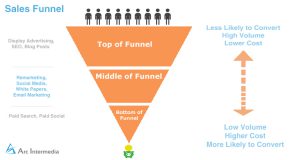
If you know that you have to earn a new customer at $20 or less, you can’t haul off and spend $5 per click unless you know that source, tactic, or whatever converts at a rate of 25 percent or higher. The key to reducing your return-on-investment (ROI) is knowing where returns are coming from and making sure your investment in paid media aligns. That simple.
Adopting a tiered bidding and budget allocation strategy that encompasses the core values of your brand while focusing on generating leads is the way to go. With this mental framework, you will be able to efficiently target your full sales funnel.
When you are setting up your paid search and display campaigns, use the data from your research to guide you in establishing your campaign targeting. Once you’ve got everything set up and your campaigns are running, use the segments and tools you used in your research to monitor performance and to identify emerging trends and opportunities. Just like everything in the digital landscape, things can change quickly and you don’t want to be caught flat-footed.
If you are still worried about lead generation vs. brand awareness, ponder this: Is there a difference between a clickless impression in an awareness campaign and a lead generation campaign? It’s time to put your awareness campaigns to work and chalk up clickless impressions to brand awareness. If you need assistance setting up your campaigns or have questions, please don’t hesitate to contact me.
